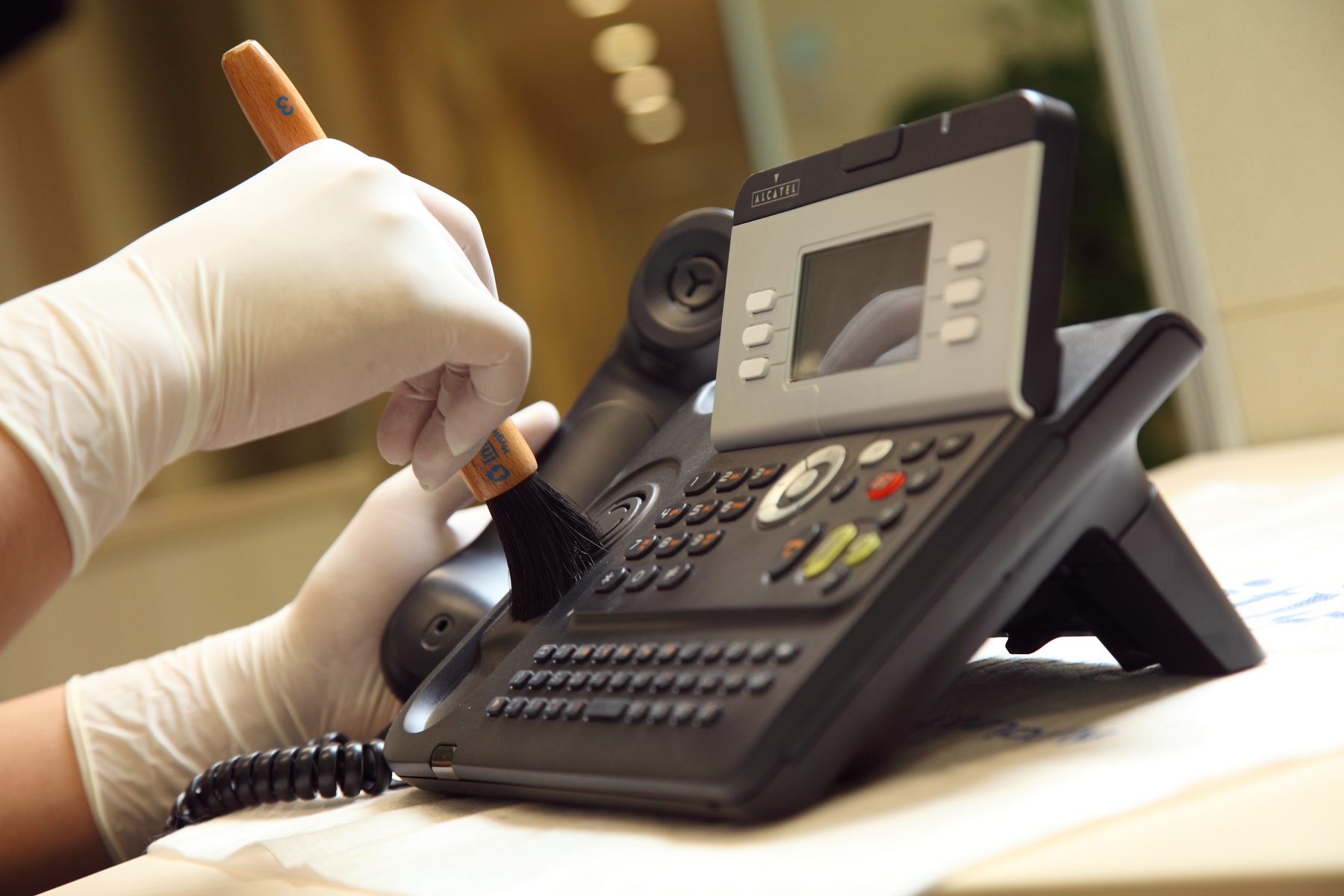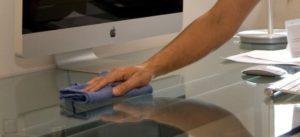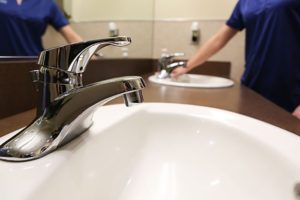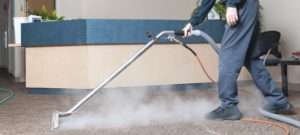Office Cleaning Services
Cross-contamination is an ongoing problem in all types of facilities — especially in schools and offices. These are places where people spend many hours per day, and studies indicate that even when they are sick, people may still go to school or work.
There is an increased likelihood of germs and bacteria from a sick person left on counters, doorknobs, and other high-touch areas, to spread from one person to another in offices and schools.
This spread of disease happens essentially unconsciously. We touch a contaminated surface and then touch mucous membranes on the ears, nose, mouth, and eyes, transferring health risking pathogens from one person to another. If the goal of our industry is to “clean for health,” then taking effective steps to stop this transmission should be on the minds of all cleaning professionals.
How to Achieve it
In most cases, stopping cross contamination before it causes illness depends on the proper use of disinfectants and sanitizers. It is important to know that disinfectants have a higher level of antimicrobial efficacy than sanitizers. While sanitizers will show a 99.9% reduction in bacteria when applied to a surface, a disinfectant will take this to the next level and demonstrate a total inactivation of a stated pathogen.
Note the emphasis on “stated.” Most disinfectants have specific “kill claims.” This means they are designed to kill specific types of viruses, pathogens, or bacteria. While there are broad-spectrum disinfectants that can and should be used for most cleaning purposes, if the goal is to eradicate a specific type of germ or bacteria – for instance, HIV – the product’s label should note that it kills that particular virus or pathogen.
In addition, cleaning professionals should be aware that not all disinfectants have the same strength. Potency is measured in parts per million (ppm) of the active ingredient in the disinfectant. The higher the ppm – usually 300 or higher – the more powerful and effective the disinfectant if diluted and used properly.
Along with allowing for proper dwell time – usually 5 to 10 minutes – cleaning pros should note that in many cases, disinfecting is a twostep process. He or she must first clean the surface before applying the disinfectant. If this step is not performed, it could possibly render the disinfectant useless, defeating the entire purpose.
What to Clean
Earlier we mentioned that high touch areas are often where cross contamination begins. Along with doorknobs and counters, some other high-touch areas are shared telephones, push plates on doors, controls on elevators, railings along walls and steps, the backs of chairs…essentially any item or surface that might be touched by one or several people during the course of the day.
However, these high-touch points are not the only culprits. The floors in many facilities can be a storehouse of germs and bacteria, and, according to some studies, we directly or indirectly touch floors as often as 50 times per day. Ever placed a package on a restroom floor and then picked it up and touched the bottom? You just touched the floor.
What happens is that gravity pulls soil and germs to the largest horizontal surface in the room, which is the floor. Because of this, properly cleaning and disinfecting floors is crucial to stopping the spread of contamination.
How to Clean
We have already mentioned some of the key steps involved in using a disinfectant properly: select a broad spectrum disinfectant designed to kill specific pathogens, ensure proper dwell time, make sure the product is potent enough to do the job, and, most important, follow the two-step process of cleaning and then disinfecting. However, even if all of the steps are followed, the goal of protecting human health can be defeated if the tools we use to clean surfaces are themselves contaminated.
Steam vapor, in limited situations, can be an option. Spray-and-vac systems are another option worth considering. They can be used for floor cleaning however they can also be used for cleaning a variety of surfaces and fixtures. The expanded versatility of spray-and-vac cleaning systems means they can be used to stop the spread of cross-contamination in more areas and on more surfaces.
However, we must realise that stopping cross-contamination is a battle that may never be won. After all, if people are going to go to school or work sick, there is little our industry can do. But by using the right products and proper cleaning methods and systems, we can certainly score many victories protecting the health of building users.
About HPFMS – Housekeeping Services in Pune
HPFMS offers a complete housekeeping solution for business houses of all sizes and we have developed a commercial maintenance concept that meets the highest quality standards. Whether you are looking for housekeeping services for office, society or commercial establishment, HPFMS’ goal is to provide you with the best possible results.
Our reputation has been built on a “Quality” approach, which we apply in every housekeeping project we undertake. In addition to using methods that comply with housekeeping standards, all our cleaning products & manpower are best in class.





